Winds blowing along the South American coast bring cold, deep ocean water to the surface. This is one of several ways that the ocean and atmosphere in the Southeast Pacific are connected.
Courtesy of NOAA
Ocean-Atmosphere Coupling in the Southeast Pacific
The ocean and the atmosphere in the Southeast Pacific Ocean are connected in many ways.
Strong trade winds blow northward along the west coast of South America. These winds stir up the ocean, bringing cold, nutrient-rich waters up from the depths. Marine organisms flourish in the coastal waters, which are one of the most productive fisheries in the world. Sea surface temperatures in the region are much colder than at comparable latitudes elsewhere.
The trade winds carry dry air. Cold ocean water is less prone to evaporation than warmer water would be. Lack of atmospheric moisture combines with the physical geography of the Andes Mountains to create Chile's Atacama Desert, one of the most arid regions on Earth.
Various types of aerosol particles are found in this region. Abundant marine plankton generate sulfate aerosols, while high winds help produce ocean spray that propels sea salt aerosols (mixed with numerous organic compounds from the ocean's surface layer) aloft. The trade winds also carry industrial pollutants out to sea. Plentiful aerosols, which serve as cloud condensation nuclei, combine with cold ocean temperatures and dry air to create a persistent layer of stratocumulus clouds over the ocean. Extensive cloud cover shades the ocean surface, helping keep the sea surface cool.
The influence of ocean-atmosphere coupling extends far beyond this region. Periodic changes in the wind patterns alter ocean circulation throughout the Pacific basin. These variations produce the infamous El Niño and La Niña events.
You might also be interested in:
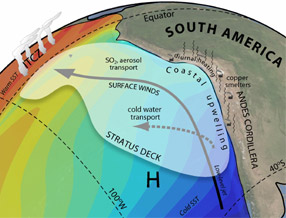
Winds in the Southeast Pacific have a strong influence on regional climate and play an important role in several large-scale, global climate phenomena. The Hadley cell is a global atmospheric circulation
...more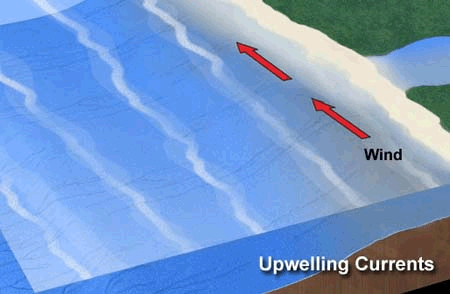
In areas of upwelling, deep ocean water makes its way to the surface. This has an impact on marine life as well as the region's climate. Upwelling happens commonly along coastlines. Winds blowing parallel
...more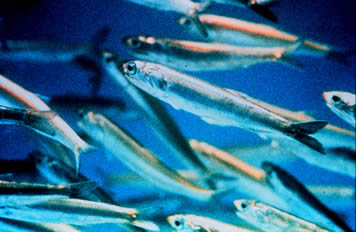
If you like anchovies on your pizza, there is a good chance that the little fish now swimming in tomato sauce was once swimming in the water of the Southeastern Pacific (SEP) Ocean. The deep, cold, and
...more
One process which transfers water from the ground back to the atmosphere is evaporation. Evaporation is when water passes from a liquid phase to a gas phase. Rates of evaporation of water depend on factors
...more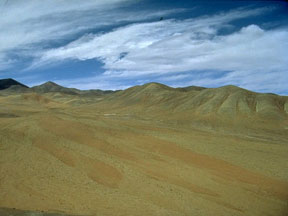
Chile's Atacama Desert is one of the driest places on Earth. Much of the desert receives less than 1 millimeter (0.04 inch) of rainfall per year on average, making it 50 times more arid than California's
...more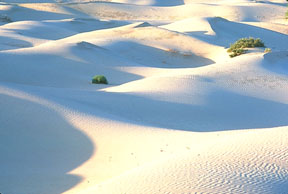
This page describes environments that are very hot or very cold, extremely dry, or both. Extreme environments are places that are inhospitable to most "normal" living creatures. Extreme environments are
...more
Aerosols, also called particulates, are tiny bits of solid or liquid suspended in the air. Some aerosols are so small that they are made only of a few molecules – so small that they are invisible because
...more














